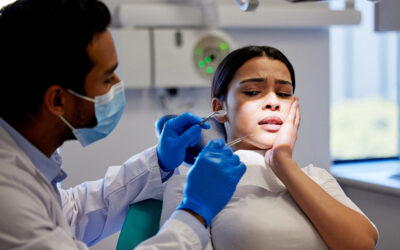One of the leading dental billing companies in U.S., Outsource Strategies International (OSI) provides billing and coding services for dentists, endodontists, orthodontists, and periodontists. Our comprehensive suite of dental billing services includes dental eligibility verifications and other services.
In today’s podcast, Amber Darst, our Solutions Manager, discusses verifying insurance in dental and medical cross coding.
Podcast Highlights
00:13 Medically Necessary Treatments Billable To a Medical Plan
01:06 Medical Necessity In Dental Medical Cross Coding
01:34 Using Correct Codes
02:08 Importance of Insurance Verification
Read Transcript
Hello, this is Amber Darst, Solutions Manager at Managed Outsourced Solutions. I’ll be talking today about verifying insurance when it comes to dental and medical cross coding.
00:13 Medically Necessary Treatments Billable To a Medical Plan
Some dental treatments can be considered medically necessary. At that point, some medical plans will pay towards their services. So, here’s a list of some of the treatments that are often considered medically necessary and therefore billable to a medical plan. We have treatment related to inflammation and infection, dental repair of teeth due to injury, exams for oral/ facial medical problems, extraction of wisdom teeth under certain conditions and the extraction of multiple teeth at one time, certain periodontal surgery procedures, consultation and treatment for TMJ, pathology that involves soft or hard tissue, appliances for sleep apnea and congenital defects.
01:06 Medical Necessity In Dental Medical Cross Coding
So, when it comes to dental medical cross coding, the most important consideration is the medical necessity to do so.
Medical necessity requires that the services and procedures be in compliance with recognized medical standards and be appropriate and necessary for the diagnosis or treatment, prevention of a medical condition, improvement of a condition, or the rehabilitation of lost skills.
01:34 Using Correct Codes
The key to successful claim submission is using the correct code to report the treatment provided. To report dental procedures to dental plans, providers generally use the CDT code procedure code sets. However some medical payers will not pay for treatments that come under the category of CDT procedures which then requires appropriate CPT codes to be used. The specific reason and the treatment that was provided should also be specified using ICD 10 codes.
02:08 Importance of Insurance Verification
It is very important to verify the benefits and coverage for every patient prior to initiating treatment. Dental medical cross coding can be very confusing and time consuming. Outsourcing this task to a reliable insurance verification company will alleviate this burden from your staff. The insurance verification specialist will take the time to gather the proper insurance information and report this on the verification form for whether a medical insurance can be built for a portion of these services.
And that’s it. Thanks for listening in!



